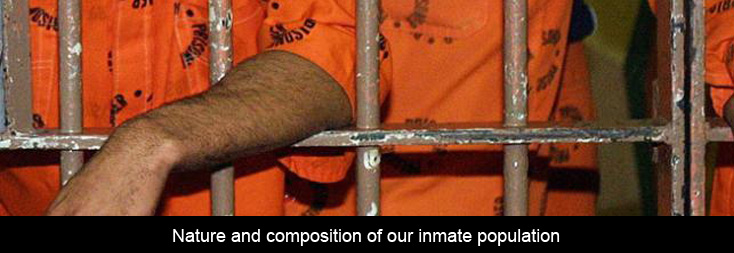Electronic monitoring of offenders results in substantial savings for taxpayers
Electronic monitoring of offenders will not only result in substantial savings for taxpayers, but will also effectively track offenders anywhere at any time.
Addressing a media briefing on electronic monitoring earlier today (11 November), Correctional Services Minister Sibusiso Ndebele said: “Against a background of stubbornly high prison populations and rapidly developing technology, governments across the world are now reaching a critical point in the use of electronic monitoring as a means of reducing costs and improving the effectiveness of corrections. Presently in South Africa, it costs the taxpayer R9, 876-35 per month to incarcerate an inmate. Electronic monitoring costs R3,379 a month per offender. This equates to a saving of almost R6,500, or 65,79%, per offender every month.
“Key benefits linked with Electronic Monitoring include:
- Effective means of disrupting offending patterns;
- A cost-efficient option;
- Offenders flexibility to adapt curfews to the requirements of individual offender management programmes;
- Offenders get to spend sufficient time with their families and this assists greatly in their restoration and reintegration;
- Increases public protection from offenders released back into the community; and
- Has a positive impact on offender behaviour, whilst enabling offenders to maintain, or seek, employment or continue with educational studies.
“Alerts, or violations, reported to the control room are investigated, and responded to, immediately. A telephone call is also made to the offender to verify details of an alleged breach, and/or a visit to the offender’s residential address, by a locally based community corrections official, to verify information or take statements or inspect the equipment.
“Through various epochs of history, South Africa had one of the highest prison populations compared to the rest of the world. Our country has 51,8 million citizens, and our rate of imprisonment is the highest in Africa. Nigeria, the continent’s most densely populated country with 166,3 million people, has approximately 51,560 inmates with 31 inmates for every 100,000 of its people. As at 7th November 2013, the number of inmates in our custody was 154,897. The number of sentenced offenders was 112,121, and the number of remand detainees 42,776. On average, 15 to 20% of awaiting-trial detainees are in custody because they cannot afford bail. Further, no address means no bail and no address means no parole. Overcrowding is the single most pressing concern facing correctional services around the world. Overcrowding may be the consequence of lack of adequate correctional facilities’ infrastructure, or a result of over use of imprisonment in the penal system. Over use of imprisonment includes indiscriminate, and even uncalculated, use of pre-trial detention. As a result of having implemented a multi-pronged overcrowding strategy, working in collaboration with criminal justice partners to improve diversion options and providing additional bed spaces, the Department of Correctional Services (DCS) managed to decrease the overcrowding rate of 37,91% during 2007/08 to 28,48% during 2012/13.In order to relieve the burden on correctional services, there is a need to consider Non-Custodial Alternative Sentencing for first minor offenders. The option of alternative Non-Custodial Sentencing will assist in relieving the challenge of overcrowding and other accompanied ills.
“The main rationale for using Electronic Monitoring includes:
Detention: Electronic Monitoring is used to ensure that an individual remains in a designated place. For example, home detention schemes typically require offenders to be at home during established curfew hours. This was one the first uses of electronic monitoring and remains the most popular.
Restriction: Electronic Monitoring is used to ensure that an individual does not enter prohibited areas or approach particular people such as complainants, potential victims or even co-offenders.
Surveillance: Electronic Monitoring is used to ensure that authorities are able to continuously track an individual, without actually restricting their movements.
“Electronic Monitoring is used during pre-trial, at sentencing or post-incarceration.
Pre-trial: Electronic monitoring can be a condition upon which a person suspected of committing a crime is released on bail. Bail conditions are normally required to be no more onerous than necessary, to ensure that the defendant appears for trial and does not commit further offences. Punishment, at this stage, is irrelevant.
Primary Sentencing: Electronic monitoring can be used as a primary sentencing option, to enforce certain restrictions on the liberty of an offender. For example, home detention schemes to keep the offender confined to his or her home during curfew hours. Unlike pre-trial arrangements, the use of electronic monitoring in this context entails a sentencing court seeking to punish an offender. This suggests a much larger role for detention. Restriction, and surveillance, can also be used to reduce the likelihood of the individual re-offending, particularly against the original victim.
Post-incarceration: The post-incarceration stage incorporates electronic monitoring in the early release of an offender into the community (i.e. towards the end of a custodial sentence, as a form of transition from a correctional facility back into the community).
“DCS embarked on the project of Electronic Monitoring of offenders, and remand detainees, in order to improve the effectiveness of the Community Corrections system and to manage overcrowding in Correctional Centres. To this end, in March 2012, DCS launched the Electronic Monitoring Pilot Project (EMPP) for 150 offenders (mainly lifers). DCS selected the two (2) piece GPS Tracking System, which integrates tracking, communication and mapping technologies. This enables operators to effectively track offenders, virtually anywhere, anytime at varying levels of intensity, namely: active, alert, passive and Radio Frequency (RF) curfew monitoring. A National Control Room is now operational at DCS Head Office. This control room is manned on a 24-hour basis, seven-days-a-week, 365-days-per-year. As DCS publicly demonstrates the Electronic Monitoring System, as an alternative to traditional incarceration for eligible offenders and an innovative way to punish crime, we urge society, communities and families to work with us in order to derive the desired benefits of public security, managing inmate population, offender reintegration as well as cost reduction. This initiative is aimed towards ‘Enhancing Public Safety through Electronic Monitoring’.
“As stated in our National Development Plan: ‘In 2030, people living in South Africa feel safe and have no fear of crime. They are safe at home, at school, at work and they enjoy an active community life free of crime. Women can walk freely in the streets and children can play safely outside…’ The journey of a thousand miles begins with a single step. Electronic Monitoring is a giant leap forward, and offers a solution to various challenges,” said the Minister.





